|
Creating art, music, writing…especially for business purposes means you are using creative to communicate and foster a relationship, so the creative has to connect to the recipient (ideally your target audience) for it to be effective.
This is the case for a live musician performing for an audience to provoke merchandise purchases or more drink sales to help the bar owner. It’s the case for the visual artist whose work catches a gallery-goer’s eye and they buy it. That purchase supports the relationship between the buyer and the artist and gallery (the artist gets paid and the gallery gets a commission for selling it and the buyer gets the artwork they liked). It’s even the case for the corporate marketer or copywriter…a potential customer visits the company website to learn about their products because of a need that the product can solve and the website copy needs to connect well to take the relationship further toward a sale. The easiest way to make such a connection is to know what your audience cares about, understand their need — the need your business solves — and present that to them through your creative. To find out what your audience cares about, ask them. Ask them what lifts them up, what upsets them, what’s most important to them. Figure out what they care about emotionally. Then go back and craft your creative for them — ideally, for one specific individual if you can — and share how your product/service solves their need, but in a way that taps into the emotions that move them from your earlier discovery. Art is a powerful vehicle to connect humans together in meaningful ways.
Sure we’re connected on the internet, which is great, but it often leaves us isolated. As an artist, what I specifically like about presenting art publicly (live music performances, art exhibits, book signings, etc.) is that the art becomes an icebreaker to simply have positive conversations with people, often strangers. That moment’s emotion and connection, while potentially small, is mutual, lasting and memorable — and that’s meaningful. Post by Nick Venturella There are about as many movies, TV shows, ads and video games out there as there are interests that people have. That’s good for musician’s because all those TV shows, films, ads, and video games need music to help their stories come alive to convey and connect the emotion of what’s on screen with the viewer. All that is to say, there is plenty of opportunity for musicians to get their music (really whatever kind of music you create in whatever genre) into various moving visual media projects. That’s because so many TV and film projects have such a variety of scenes and stories being told that require the right music to help it all gel and emote the way the director wants. This is why music supervisors (those who typically help identify the right songs for each scene of a movie, ad, game, or show) comb through tons of music searching for the right fit, with the right tempo, lyric, instrumentation, vibe, and feel to help drive the scene forward. As exciting as it is to hear your song as part of a TV show or movie, the promotional boost for your music and brand along with the licensing fee payout, and ongoing (backend) royalty payments is why sync licensing of music is a desirable part of musician entrepreneurship. Sync provides music creators with a substantial revenue stream among the many revenue streams a musician has to piece together to make up their entire income. Most musicians have several income streams that when cobbled together make up their entire annual earnings (what might be an annual salary for others in a regular consistent job). Because musicians’ income streams often vary in terms of when they pay and how much they pay, sync licensing deals can provide some income stability compared to other music-related income streams. This is often due to upfront licensing fees paid for permission to use your music in a film or on a TV show as well as the backend royalties that your Performing Rights Organization (PRO), like ASCAP or BMI, will collect from streaming. These streaming royalties often increase when your song is placed in TV or film because most productions like a movie will create streaming playlists of the music in the movie to help with the film’s promotional campaign to market the movie. This marketing boost, which is simply a byproduct of your song being licensed, helps promote your music to a much larger audience than you might have been able to reach on your own. That leads to many more people discovering your music and streaming it, which adds to your backend royalty revenue. Want to get even more in-depth knowledge about how sync licensing works? Apply to enroll in Ari’s Take Academy’s Sync Licensing course. (affiliate link) I took this course myself. It provides a lot of detail about all aspects of sync taught by Vo Williams who is a veteran in the sync world with literally thousands of placements under his belt. Plus, you get access to a great community of other music creators, and you’ll have the opportunity to pitch your songs to real sync agencies and production houses seeking licensable songs for projects. I’m navigating the human condition like everyone else.
Sometimes that makes me feel like an imposter in my professional pursuits. Why? Because… I don’t just concentrate on one thing in my career… as opposed to what most of society seems to suggest in order to achieve professional success… I write, create art and I create music as a means of expression to help me understand the world and where I fit in it. Turns out, others relate to my expressions too, and want to pay me for them. This is one of my professional pursuits. I also package up my creative skills, marketing and business knowledge (much of which are transferable skills from being an entrepreneurial musician) to meet the needs of my full-time employer. This is work I enjoy and, in addition to my creative pursuits, it helps me make enough of a financial living to provide for my family and myself. All of the above makes up my individual professional, career brand. I don’t solely concentrate on one pursuit in my career, but their are commonalities and overlapping skills among them. The sum of my interests, skills and experience makes up how I’m able to have success as a musician and marketer — it makes up the whole of my career. At this point in my life these revenue-generating pursuits have become symbiotic. I learn a lot in each area that transfers to the other. It’s kind of magical, really. One needs the other for my personal career brand to work and be successful. At least that’s what I’ve determined. Turns out, there are many others out there (maybe even you) in a similar boat with intertwined multiple career pursuits that make up their holistic career brand. Knowing this, I now don’t feel as alone, and I no longer feel like such an imposter because I’m embracing what makes up my entire career, what has proven to be successful for me. I realize I don't have to follow the norm, and I've found I'm happier paving my own path. It’s taken (and still takes) a lot of self-reflection to find the self-awareness to guide me forward and build my confidence to create the career results I'm after. However, my own accomplishments make me want to continue to invest in myself and others who struggle with the guilt that the whole of their career brand doesn’t fit into one job. Guess what? It doesn't have to, and I'll help you break down the self-reflection tools that can help you invest in yourself for your own version of success. 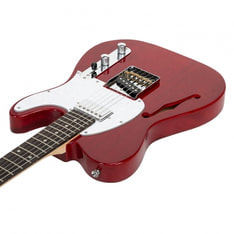 I've been playing Telecaster style guitars for multiple decades. I really enjoy the body shape, feel, and tones you can conjure up with a T-style guitar. In my opinion, Tele's are some of the most versatile guitars available. They're a fit for just about any music genre or application. For this reason, T-style guitars are a popular choice. Because T-style guitars are popular and come in a few variations - semi-hollow, solid body, two single-coil pick ups, one humbucker and one single-coil, or two humbuckers - they also typically come with a variety of prices for different configurations and brands. Whether a guitar player is a beginner or more advanced, I have no doubt they will find great value for the price in Glarry's T-style guitars. The one I am partial to and own is the GTL Semi-hollow electric guitar (affiliate) from Glarry. The guitar has an "f" sound hole (the semi-hollow part), and a humbucker pick up in the neck position along with a single-coil pick up at the bridge, 3-way toggle switch and a tone and volume knob. The neck is closer to a 12" radius (this is bigger than the 9.5" neck radius of a traditional Fender Telecaster), but a little larger neck radius provides easier soloing. Between the guitar itself and whatever amplifier you plug it into you can dial in some really smooth bassy tones with the humbucker pickup or crank the distortion and get a thick rock sound. You can also get the sweet single-coil pick up sound that jangles and twangs from the bridge pickup...again, making this guitar's sound versatile for any musical application. Plus, the price is less than Fender's student/beginner series of Squire Telecaster guitars, making the Glarry a great choice for the money. Below is my unboxing video of the GTL Semi-hollow electric guitar (affiliate) from Glarry. I was reading a post today on Medium by Mark Schaefer, the renowned marketing author.
In the post, Schaefer was explaining marketing for the arts, and specifically musicians, in five minutes. I love this as it is really a combination of what I love about being a creative entrepreneur and marketer. The post describes why brand marketing -- the feeling that you expect from what a company or musician/band represents -- is so important, and how attracting one's ideal audience to your brand (that is, finding people who emotionally connect to what you create, or rather not you individually, but what the brand creates and represents) is the basis for cultivating loyal fans, or in corporate business setting you might call them customer advocates. It's only when you've garnered the attention of those people (across social or the like) who sense something in you that they can potentially connect to emotionally that you can capitalize on the invitation to deepen your respective relationship and truly harvest a loyal fan willing to help financially support your creative endeavors that bring them value. The reason this works is because from a tactical standpoint, when you uncover a potential fan -- someone sees one of your reels on social media, etc. -- and you capture their attention, if there is a potential for an emotional connection while you have their attention, driving them to your website or email list provides that next step to deepen the relationship. That's where you, as a brand, can build a deeper connection and introduce that potential fan to a whole community of fans surrounding your brand. This allows them to further deepen their connection with your brand by helping them foster an emotional connection not only to you, but to others with a shared interest or purpose related to the brand at large. Now, that fan is a fan for more than just you as their singular interest in the brand, now they're part of a community where they can make friends. Okay, so I’ve paid attention to some of the marketing and communications trends that have happened over the last several decades as we attempt, in business, to balance marketing strategies and tactics with technology and online tools that will resonate and be accepted/consumed by the people within our target audience.
I’m referring to trends like, when websites first were introduced to the business world, when social media was first introduced to the business world, and now as online community and advocacy efforts are being introduced to the business world as a result of how groups of potential buyers interact with, shop for, and make purchasing decisions about B-to-B products and services. To build anything new that is effective in relation to these “new” sales/marketing/communications trends hiring someone with previous experience building such a thing is ideal. Someone with such experience can likely build, in this case, a community and advocacy program more quickly and effectively than someone with less experience. However, such experience comes at a higher price than someone with less experience. And, quite frankly, building out an effective community and advocacy strategy is a complex task because of the holistic nature of how it touches so many aspects of the business organization that it’s designed to help, not to mention the necessary consideration for your customers’ point of view and experiential habits as they interact with your organization both online and off. So, my advice to business recruiters who are trying to hire community and advocacy professionals to build out their organizations’ strategy, please keep in mind that doing so is a complex task and those with the experience in this realm will probably be your organization’s best bet towards accelerating your time-to-value with the desired outcome that you’re hoping to get from building out a community and advocacy strategy. The return on that investment will likely be far greater than the higher salary you have to pay an experienced professional to build out this kind of strategy. Please do not be surprised when you hire a junior level, less experienced professional, to create and build out your community and advocacy strategy and it takes a lot longer than you expected and isn’t as effective initially as you want it to be. That is not the fault of the junior professional but rather your organization for not setting them, and you, up for success. This is not to knock anyone who is junior in this industry who is trying to build their experience to get to that higher level in their career, but rather for the organizations who are recruiting for those kinds of positions to understand, and be very aware, that if your budget is such that you cannot afford someone with more experience to build out what you need more quickly and effectively it is absolutely okay to give an opportunity to someone more junior, and I encourage this — all emerging superstars in this discipline need a break to prove themselves — just understand that their learning curve is going to be greater and you need to be okay with fostering their pursuit to excellence for their own career and your business’ success. You took the risk on someone with less experience. Set them up for success and together you’ll build something remarkable. If that’s not what you’re after, simply pony up the money and supporting resources needed to attract more experienced talent – they’re worth it. Where is the future of Community and Advocacy headed for Customer Marketers/Advocate Marketers/Customer Success professionals?
I’ll tell you, and yes, much of this is already happening, but it will soon compound and accelerate as more and more organizations understand how to approach it for their success. First off, when the pandemic hit is when I personally feel many B2B organizations, who either weren't utilizing customer community and advocacy practices, or were doing so in a half-hearted piloted way, learned what the rest of us in our discipline already knew: taking care of/engaging/guiding current customers can lead to steady profits at a lower cost of acquisition. Companies' backs were against the COVID wall. They needed to do something different to allow the business to survive and even thrive on a new playing field. Organizations pivoted to invest more in retaining the current customers they had knowing the cost/time effort was too great (and frankly unknown at the time) for attracting enough net new customers. One seemingly "easy" and cost-effective way to double-down on current customers was to stand up a community, engage customers, and nurture them to advocacy where retention and profits grow. Easy solution. Right? Not really when approached out of desperation. While many organizations emerged with innovative communities and great advocacy practices an equal, if not higher, amount thought just standing up a community would solve their short-sighted issues. Those who didn't pay attention and invest the necessary time, effort, and money into a well-established community experience for their customers are watching their competing peer organizations soar past them with continued success as they wonder why their community isn't working. Part of the reason those communities are failing is because one can't just stand a community up and check the box that now the organization has one that nurtures customer advocacy. That just won't cut it, and if you're the one who suggested it in your organization, it's likely why you'll be let go. Furthermore, that organization will begin to believe that community and advocacy is a fad, like social media (sense my sarcasm), and doesn't work. Then the organization will fall further behind the current learning curve while their profits continue to decline in comparison to their competitors who figured out the magic of community and advocacy. This was a similar phenomenon when company websites came on the scene, when social media for business came to the fore, and now with community and advocacy. Enough with the recent history lesson, what's going on now and moving forward? Community and Advocacy is now in full view of the C-suite. It was there before, but only about a quarter of the C-suite were paying any attention to it. If for some reason your C-suite is not on board, you may want to consider other employment options. Today, in order for B2B companies to compete and/or have an advantage they have to embrace community and advocacy practices. Mainly, if they don't, they'll be left behind or just not even considered when potential customers are making a purchasing decision. Hint: buyers are looking for strong customer communities as an added value reason to make a purchase. Companies that "get" Community and Advocacy are investing in providing added value to their customers beyond the core product purchased by having the power of a community to to help those customers with increased self-service, peer-to-peer crowd-sourced answers to their questions, and all in an online search engine style community site. A customer community experience that makes your complex product easy to adopt, easy to own, and accelerates time-to-value WILL be engaged with, but it goes further...if you tap into the social/emotional aspect of your customers you can not only engage customers personally and professionally, but by doing so you'll promote empowerment, thought-leadership, recognition for individual and company successes, career advancement, a sense of purpose and belonging...a full-on positive brand culture if you will (all the building blocks of advocacy). Oh, and yes, you will experience retention from your customers and even expansion purchases for far less than the cost of acquiring net new customers. Let's address net new customers for a second...with the kind of advocacy that results from your delivering value via your product and your awesome community, you'll have more successful customers willing to share their stories, more customers referring business to you because they love how your company helps them do their job better...your customers become your best sales and marketing team...because they're selling their outcomes to your prospects. Prospects who are after similar outcomes. Why does all of this work? Because you have tapped into trust-building at scale. You're providing so much added value to customers by making easy the adoption of your product and their ability to be successful with it. Plus, because your community is online and the content is crowd-sourced by customers in addition to your organization's experts, the community information and value exponentially continues to grow. It becomes a better and better search engine that both your customers and your organization benefit from. Creating a world class customer community experience will continue to be a differentiator for B2B organizations (especially XaaS companies) in the near future. It's not easy to do, which is why many organizations are currently in an arms race to thoughtfully stand up their communities. They recognize the sales, marketing, product dev., support, and customer success benefits of employing Community and Advocacy...do you? These days customer marketing -- including customer engagement and advocacy -- often collaborate with customer success department efforts. In fact, customer marketing may sit within the customer success department. This is not uncommon, especially in business-to-business (B2B) software organizations.
Having these disciplines' separated as different, though related, functions is often how mid-market and/or enterprise level B2B software organizations operate. This makes some sense, as these sized organizations likely have more resources (financial and human) to operate and scale these functions within their organization, and at various customer interaction levels (i.e. tech touch, low touch, and high touch). But I think many smaller B2B companies are seeing the effects of the pandemic on their own business economy and understand that building a repeatable process to accelerate customers' success using their products/services while engaging and cultivating those customers into trusted partners and brand advocates, can help weather similar storms in the future. In other words, I think even smaller businesses are realizing they need some level of customer marketing and customer success to compete in the latest, and forthcoming post-COVID, version of the customer economy. But how does a small B2B organization employ customer marketing and/or customer success functions with little headcount and even less budget? Well, I think smaller B2B organizations will start to develop a hybrid version of tech touch customer marketing and customer success that will help engage and cultivate customers into brand advocates, but also drive customer community collaboration (i.e. peer-to-peer help from customer to customer towards success with the product). We already see this in larger mid-market and enterprise organizations, but it's usually a combination of tech touch, low touch, and high touch customer interactions across the customer marketing and customer success functions. The effect of their impact ripples through the support department, product development, and of course sales and marketing. Building successful relationships with your customers who want to advocate on behalf of your brand becomes a force multiplier in an organization's marketplace credibility, growth, and revenue. However, such efforts are not a quick win. Just like any relationship it takes time to build appropriate trust to then leverage that trust for mutual benefit, gain, and success. Like inbound marketing in the recent past allowing smaller organizations to compete with larger, better resourced companies via content and SEO, customer marketing and customer success practices can help smaller organizations survive otherwise devastating economic blows from unforeseen forces. This is because, if you have a community of customers who love your brand, that advocacy helps insulate you from customer churn while helping accelerate customers' success with your products/services and expanding/extending their lifetime value to your organization. This also supplies your brand with more marketplace credibility, which makes sales and marketing growth goals easier to achieve. The trickiest part for small B2B companies leveraging some form of customer marketing and customer success is getting creative with limited resources to define and successfully execute an effective strategy. When headcount, finances, and tools (tech stack) are limited it takes the right kind of marketer to put even a simple solution, using ubiquitous, often disparate, tools together. However, it is possible, and I believe you'll end up seeing more technology tools become available in the next several years designed specifically for the SMB space to scale and automate more of their customer marketing and customer success functions. Recently I was on LinkedIn and a newly minted connection asked about my professional pursuits. I described that I'm a customer marketer among other things, and she asked what I meant by "customer marketer."
This isn't the first time I've been asked this question, and it makes sense that it's coming up more now (as the COVID-19 pandemic is still going) and companies are looking to double down on their current customer base to retain them and their associated revenue. Customer Marketing is a specific discipline within marketing. It really grew out of B2B software organizations. Think of subscription software (SaaS offerings) where customers subscribe to use a software application, but because it's subscription based, and the fact that there are competing software products providing similar services/outcomes, customers can leave at any time fairly easily, and with less financial repercussions than in the past. In the past, it was harder for customers of a software product to move on after making a hefty upfront investment in the software solution, and they owned it, and needed to maintain it - a very expensive arrangement for the customer. Now the software organization owns the burden of the software solution's backend infrastructure and maintenance, which is why it's less expensive to "own" for a customer, or rather rent for a monthly subscription fee. Today, the customer isn't so heavily invested, at least not financially, in the software product like they were in the past when they had to buy and own it outright. This is helpful news for customers, but it means that the burden to retain customers using the software falls to the solution provider because the choice to switch software solution providers is no longer purely financial. In other words, the customer can more cheaply leave one software subscription for another and potentially still have spent less money than what it would have cost to buy and implement the software like in past models. The customer is no longer bound to keep using an outdated solution simply because it's not cost-effective to switch and buy another. This caused a problem for Software-as-a-Service (SaaS) providers. Enter: churn. Churn is when a customer leaves and their subscription revenue is lost by the software provider because of their departure. A SaaS based solution provider thrives on predictable recurring revenue, which means it needs to know how many subscribers they have, what they're currently paying per month, and, if the organization is successful in keeping those customers next month, the software company's month-over-month revenue should be X. That little bit, "if the organization is successful in keeping those customers next month," is where both the Customer Success and Customer Marketing disciplines in software organizations came from. Software companies are full of innovative, smart people, so they decided to solve for this issue. Enter: Customer Success. Customer Success Managers (CSMs) became this post-sale hybrid of customer service reps, product coaches, marketers, and inside sales reps for a small group of customers in a CSM's book of business. The idea is that the CSM would build a trusting relationship with the software customer and help that customer become successful adopting and using the software as intended for their organization. That bit, "help that customer become successful," is where Customer Marketing launched forth. Customer Marketing as a whole benefits an entire software organization from Customer Success, Support, and Product departments, to Marketing and Sales. To keep customers from churning Customer Success is trying to help their customers accelerate their adoption of and success with their software solution - reduce time to value. The faster customers realize value and validate their reason for purchasing this software the more trust is built between the customer and the software solution provider, and the likelier it is that the customer won't churn. Customer Marketing takes this a step further by building processes and practices to provide air-cover (constant engagement and touchpoints for the customer to aid their individual growth and acceleration with the products and with their peers and counterparts who are also using the product). This creates consistent valuable engagement between customers and software providers aiding the acceleration of trust between the two parties. This is also where communities form around a software brand/product and its customers - the software and the outcomes it provides is a shared purpose/pursuit for customers (and the software provider for that matter). Customer Marketing works to cultivate that trust with customers over time by providing added value related to and around the software through ongoing engaging activities and interactive communications. Those ongoing engaging activities and interactive communications provide customers with:
All those elements of ongoing engagement and interactive communications over time lead to successful customers who trust in their software provider because they're engaged as humans, individuals bound by a shared software solution, and that trust eventually turns into advocacy - customers' advocacy for a software solution and brand. A customer's advocacy at that level is invaluable because now the Customer Marketer can present opportunities for that customer advocate to further their own thought leadership on a topic they're now already passionate about so they want to share their success story with others to evangelize the software and the brand. At this point, the software company has not only helped to solve its churn issue, it's now fostered an avenue to capture voice-of-the-customer progress and success stories via its advocates. Customer Marketing can leverage those advocates to co-create customer story video assets, case studies, user groups, product councils, mentoring programs, provide reference customers to prospects considering purchasing the software, etc... All things that not only put customers center stage to recognize their hard work and successes with the software product, but also to have a positive network effect across the software organization's whole operation with a focus on the customer. Such a focus will help to increase customer retention, growth, and revenue. Here are some examples of that network effect across a software company's operations:
Customer Marketing is a simple concept, but it is complex to implement and execute well so that a real and transparent, trusted partnership between a brand and its customers can form. The idea of Customer Marketing is to build trust in a customer-centric way. It's a deliberate focus on partnering with one's customers to co-create value with, and for, one another. This builds longer term relationships with customers, which accelerates customers' adoption and success with the product, which increases renewal rates (reducing churn), provides peer-to-peer customer networking and support, leads to easier up-sells/cross-sells and overall an extended/increased life-time value of customers... Ultimately, it's cultivating the desire for a customer and their software partner to want to support each other's success. However, a software organization cannot reach the kind of Customer Marketing state described above without getting their own house in order. To do that they need to partner with their employees to create a positive, trusting, and humane environment that cannot help but engage its employees to want to band together and create a brand-differentiating company culture. When that's in place, executing Customer Marketing is way easier because employees truly want the company to be successful and partner meaningfully with customers. But that's a post for another time. |
Invest in yourself. Get creative/business/life insights in your inbox - sign up for my eNewsletter.
Archives
July 2024
|


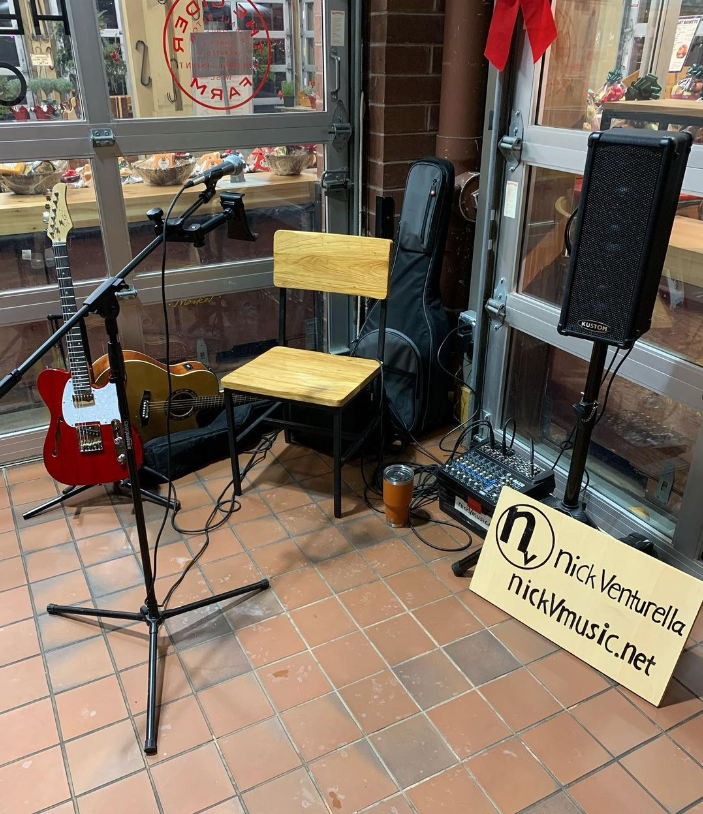
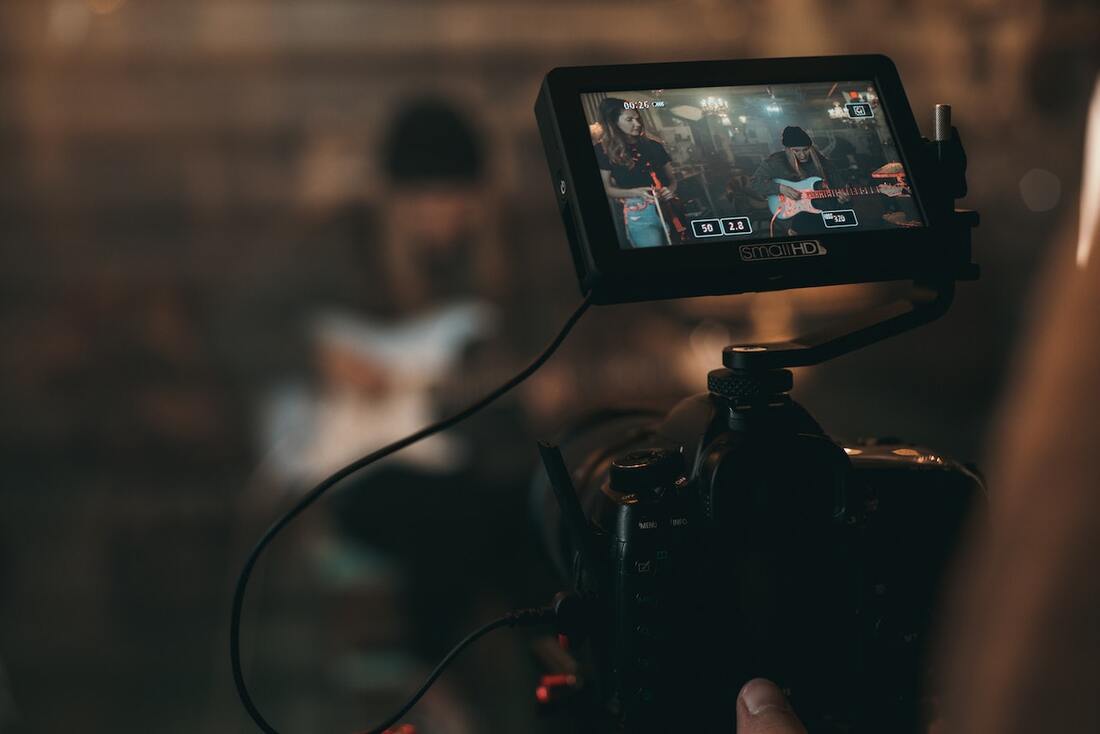
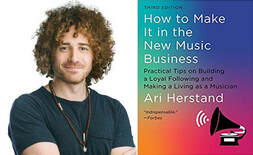
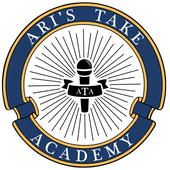





 RSS Feed
RSS Feed

